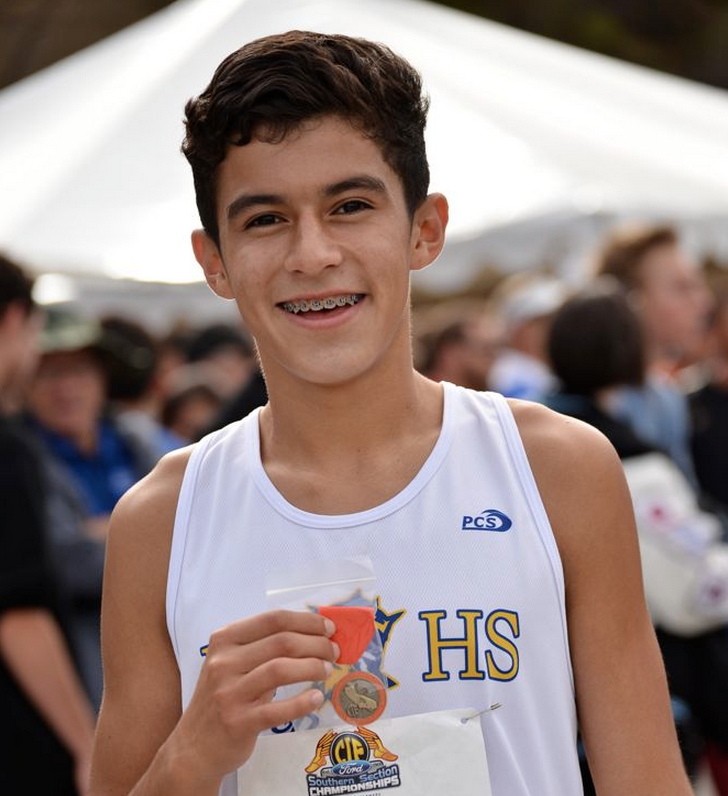
By Heather Carr
Since Fountain Valley High School first opened its doors in 1966, the top ten finishers in each cross-country race at the Sunset League Finals received medals. This included boys and girls races on all levels.
This year the Sunset League implemented a new policy to reduce the number of medals given out at the Finals ceremony. This cut the distribution of medals from sixty overall, to only six—one medal given to each of the top three finishers in both the girls and boys varsity races.
Immediately, athletes, coaches, and parents stepped forward to express their disapproval. “It’s not fair,” said Robert Osorio (’15). “It’s been like a tradition or something and now they’ve decided to change it.”
Galyn Nash (’15) agreed. “I think its pretty stupid and everyone deserves to get recognized, not just the three fastest people.”
According to athletic director Dawn Lawler, changes to the Sunset League policies are suggested by the athletic directors from each of the schools, who meet to discuss the issues and needs of the league. They send their suggestions to the principals who make a final decision on whether or not to implement that policy.
“The policy was proposed and supported for a few reasons,” said Lawler. “To align track and cross-country with other sports, to add a higher level of competition in the League. Finances were also considered…as well as aligning our sports with real world sports.”
The medal reduction wasn’t the only policy implemented.
“The policy is that at the League Finals only the top three finishers are to be recognized verbally and with medals,” Lawler continued. “If coaches want to recognize verbally other places at their banquet they are more than welcome to do so. The teams are not to purchase their own medals to give out.”
In an email obtained by Baron Banner, FVHS cross-country and track boosters expressed their concern to school athletic directors Dawn Lawler and Steve Eggert. “We were also puzzled and surprised when we were told we should not even verbally recognize runners four through ten on the varsity squads. What harm would this do? The athletes represent the top in their sport and deserve to be rewarded after a long season of hard work,” the letter read.
The email went on to say, “If the League is attempting to be fair and apply the same ‘medal’ rule to all sports, we can only say there is no single rule that can be fair for all sports. As you know, the event sports are nothing like the team sports. And even the event sports are not alike, as cross-country has only one event in which all athletes compete.”
The boosters proposed some alternatives, such as budgeting an equal dollar amount in each sport for the medals to allow the coaches to decide how the top athletes of their sport should be received.
Because the former medal policy has long been an FVHS tradition, many runners and coaches find the new policy hard to accept. “We used to be able to call up the top ten for each grade level,” said Coach J.D. Krawczyk, “and it was great that they got recognized in front of a lot of people when there weren’t that many other opportunities for that to happen.”
Though the decision to reduce medal distribution has already gone into effect, debate over the policy among athletes and coaches has yet to cease. “”We feel the top ten in every race should be recognized, not just varsity,” said runner Amber Bragdon (’14). “We’re extremely unhappy about the situation.”





